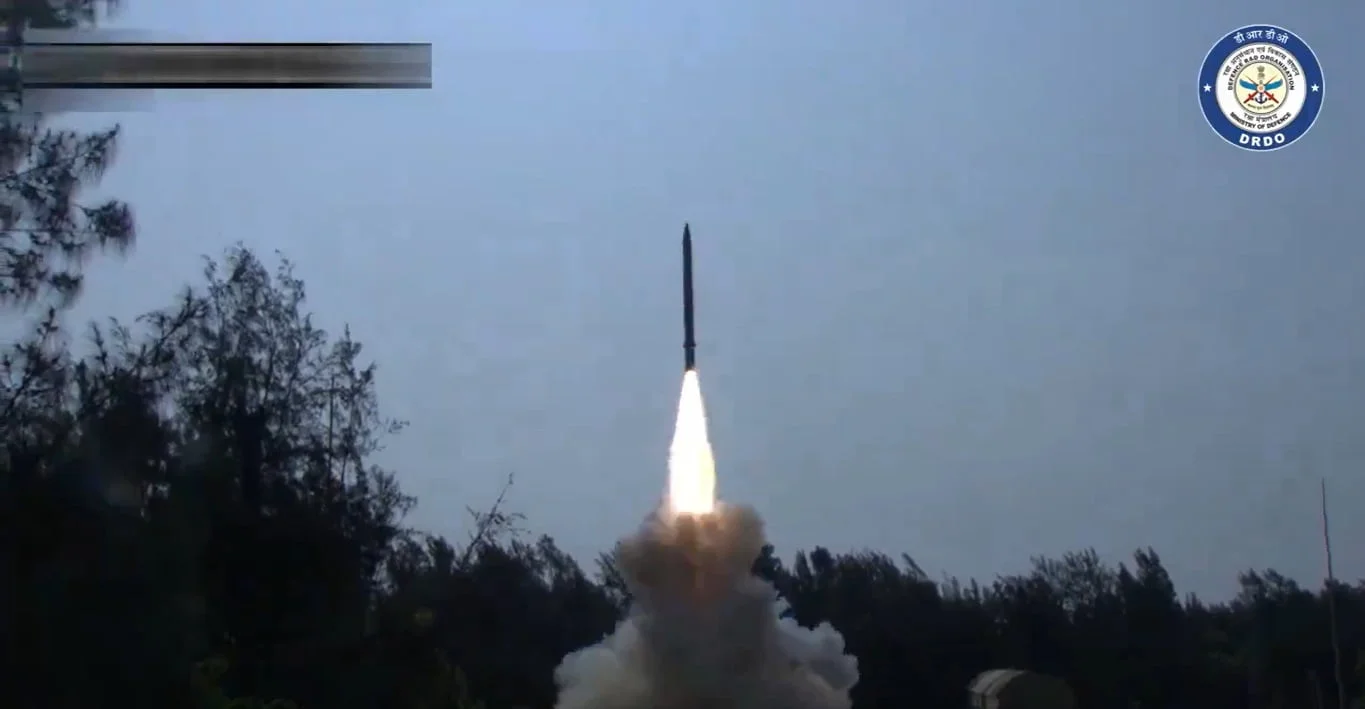Blog Credit: Trupti Thakur
Image Courtesy: Google
SMART – SUPERSONIC MISSILE-ASSISTED RELEASE OF TORPEDO
The Defence Research and Development Organisation (DRDO) on May 1 announced the successful flight test of the Supersonic Missile-Assisted Release of Torpedo (SMART) system from Dr APJ Abdul Kalam Island off the coast of Odisha.
SMART is a next-generation missile-based light-weight torpedo delivery system designed and developed by DRDO to enhance the anti-submarine warfare capability of the Indian Navy far beyond the conventional range of lightweight torpedoes.
“This canister-based missile system consists of several advanced sub-systems, namely two-stage solid propulsion system, electromechanical actuator system, precision inertial navigation system etc. The system carries advanced light-weight torpedo as payload along with parachute-based release system,” DRDO said in a statement.
The missile was launched from the ground mobile launcher. Several state-of-the-art mechanisms such as symmetric separation, ejection and velocity control have been validated in this test, it added. The SMART system has been tested earlier. The Defence Research and Development Organisation (DRDO) on May 1 announced the successful flight test of the Supersonic Missile-Assisted Release of Torpedo (SMART) system from Dr APJ Abdul Kalam Island off the coast of Odisha.
SMART is a next-generation missile-based light-weight torpedo delivery system designed and developed by DRDO to enhance the anti-submarine warfare capability of the Indian Navy far beyond the conventional range of lightweight torpedoes.
“This canister-based missile system consists of several advanced sub-systems, namely two-stage solid propulsion system, electromechanical actuator system, precision inertial navigation system etc. The system carries advanced light-weight torpedo as payload along with parachute-based release system,” DRDO said in a statement.
The missile was launched from the ground mobile launcher. Several state-of-the-art mechanisms such as symmetric separation, ejection and velocity control have been validated in this test, it added. The SMART system has been tested earlier.
More About SMART :
SMART is a canisterised hybrid system, made up of long-range missile carrier that can travel at supersonic speed and a lightweight torpedo as payload for anti-submarine warfare (ASW) role. The objective behind the project is to develop a quick reaction system that can launch torpedo from standoff distance. The missile has a range of 643 km (400 mi) carrying a light weight torpedo of range 20 km (12.5 mi) with 50 kg high explosive warhead.
SMART uses two-way data link connected to airborne or ship based submarine detection and identification systems. SMART can be launched from a surface ship or a truck-based coastal battery. The missile delivery system was developed jointly by Defence Research Development Laboratory (DRDL) and Research Centre Imarat (RCI). Naval Science and Technological Laboratory (NSTL) developed the autonomous lightweight torpedo and associated technologies such as detonation mechanism, underwater guidance and underwater thruster. Aerial Delivery Research and Development Establishment (ADRDE) developed the velocity reduction mechanism that act before releasing an autonomous lightweight torpedo towards the designated target. SMART is part of fusion project to combine technologies of institutions dealing with land and naval based armaments. High Energy Materials Research Laboratory (HEMRL) developed the insensitive explosive formulations for naval warhead. Ministry of Defence (MoD) in 2018–19 annual report mentioned that DRDO started the development and demonstration of missile assisted release of light weight torpedo for ASW role. The ejection trial was done using Advanced Light Torpedo Shyena.
The missile is powered by a dual stage solid-propellant rocket and utilizes electro-mechanical actuators for course correction. For in-flight guidance, SMART uses a inertial navigation system (INS), and allows real-time course correction and target updating via datalink. The missile utilizes sea skimming in order to reduce detection range. SMART is similar in concept to the now cancelled UUM-125 Sea Lance from Boeing. The system is under-development due to increasing deployment of submarines by People’s Liberation Army Navy Submarine Force (PLANSF) in the Indian Ocean Region (IOR), rapid modernization of naval assets by People’s Liberation Army Navy (PLAN) and the building of Chinese overseas military bases in Africa.
Trials
SMART launched from Integrated Test RangeSMART missile during the first trial on 5 October 2020
First trial
On 5 October 2020, The first successful test of SMART was done from Abdul Kalam Island. This was part of demonstration test to check missile flight for maximum range and altitude, separation of the nose cone, release of torpedo and deployment of velocity reduction mechanism.
Second trial
On 13 December 2021, the second test of SMART was conducted successfully from Integrated Test Range (ITR), Odisha. The entire trajectory was monitored by the electro-optic telemetry system, various range radars including the downrange instrumentation and downrange ships. The missile carried a torpedo, parachute delivery system and release mechanisms.
Third trial
On 1 May 2024, DRDO successfully conducted the third SMART missile trial from Integrated Test Range, Balasore, Odisha. The entire range capability was demonstrated during the test, which was carried out using a ground-based canister launcher system. The test confirmed velocity control, ejection, and symmetric separation. Precision inertial navigation, an electromechanical actuator system, and a two-stage solid propulsion system were all part of the missile architecture. The system’s payload consisted of a sophisticated lightweight torpedo and a parachute-based release mechanism.
Blog By: Trupti Thakur

02
MaySMART
May 02, 2024Recent Blog
The TechKritiApr 26, 2025
India’s First Quantum Computing VillageApr 24, 2025
India’s Achievement In QKDApr 22, 2025
The V2G TechnologyApr 21, 2025
Country’s Specific Domain By GoogleApr 19, 2025




